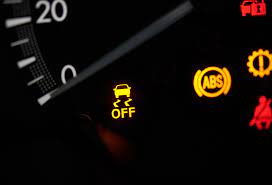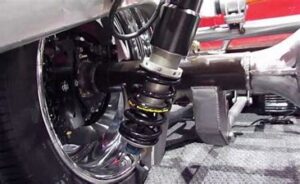Have you ever looked at the confusing acronyms strewn all over your car’s dashboard and wondered what they meant? ESP BAS is one such perplexing mix. This acronym is the key to a vital safety element that is integral to your driving experience in the world of cars. So what does ESP BAS mean on a car? Let’s put it in simpler terms: ESP BAS stands for Electronic Stability Program and Brake Assist System. Think of your car as a reliable travelling friend who is always willing to offer assistance when things become a little complicated.
Your car’s ESP BAS acts as a kind of guardian angel, keeping it stable throughout curves and offering additional support when you need to brake quickly. We’ll solve the enigma behind ESP BAS in this post by examining its common usage. We’ll go over how it helps to keep you safe while driving and why all drivers need to learn this acronym. So grab a seat, because we’re going to take you on a journey to understand ESP BAS and give you the skills you need to drive confidently.
Table of Contents
What Does ESP BAS Mean On A Car?
The Electronic Stability Program and Brake Assist System, or ESP BAS for short, is like having a watchful driver behind your automobile. Allow me to explain it simply. The Electronic Stability Program (ESP) monitors the stability of your vehicle, much like a smart assistant. It’s particularly useful in challenging circumstances, including slick roads or unexpected swerving. ESP acts as a sort of magical steering assistance, preventing skidding and assisting you in maintaining control.

Let’s now discuss the Brake Assist System (BAS). In an emergency, BAS comes in handy when you need to apply the brakes hard. It detects when you apply a sudden, forceful brake and engages to give you more stopping strength. This superhuman talent makes sure your automobile stops as soon as possible, protecting both you and other drivers on the road.
Simply expressed, ESP BAS is your car’s method of communicating, “I’ve got your back.” This dynamic pair ensures that your driving experience is safer and more controllable, whether it’s assisting you during quick stops or balancing your vehicle on slick roads. Therefore, remember that your automobile is merely performing its heroic duty of keeping you safe on the road the next time you see the ESP BAS light up on your dashboard.
Understanding The Importance Of An ESP BAS On A Car
A car’s Brake Assist System (ESP BAS) and Electronic Stability Program (ESP) are essential for maintaining road safety. Consider it your car’s watchful protector, especially under difficult driving circumstances. The purpose of ESP BAS is to improve stability by averting skids and slides on slick surfaces or during abrupt manoeuvres. The system intervenes to apply individual brakes and modify engine power when it senses a loss of traction or a possible loss of control, assisting the driver in keeping control. In addition, ESP BAS saves the day when emergency braking is required. It senses when you need to brake quickly and applies greater braking force to provide a more controlled and swift halt.

However, this feature is essential for averting mishaps and lessening the damage caused by collisions. To put it simply, ESP BAS functions as a safety net that is constantly prepared to step in and assist when something unexpected happens while driving. This device quietly operates in the background, assisting with manoeuvres like quick stops and sharp turns, greatly enhancing road safety. It is crucial because it gives drivers the certainty and confidence that their car can manage unforeseen situations, making every trip safer.
How Does ESP BAS On A Car Work: Navigating The Road To Safety
Your car’s Brake Assist System (BAS) and Electronic Stability Program (ESP) cooperate to offer a safety net in difficult driving circumstances. Think of them as the dynamic couple in your car, always willing to jump in and help out when things get hard on the road.

-
Electronic Stability Program (ESP):
ESP is like having an angel watching over the stability of your car. It continuously tracks the motion of your car using a variety of sensors to identify any detours from your intended route. It intervenes by braking certain wheels only when it detects that your automobile is losing traction or deviating off track. This corrective manoeuvre keeps your car from skidding and helps you get it back in alignment.
For example, the ESP can apply brakes to specific wheels to counteract the slide and keep you in control if it detects that you are making a tight bend and the rear wheels are beginning to slide out. This is particularly important when it’s slick outside, like rain or snow, and it gets difficult to keep traction.

-
Brake Assist System (BAS):
Let us now discuss the Brake Assist System. In an emergency, your car’s quick response is the BAS. BAS offers more braking force when you apply the brakes unexpectedly because it recognizes the urgency of the situation. This speedy reaction helps lower the chance of an accident by ensuring that your car stops as soon as feasible.
ESP and BAS work together to provide an all-encompassing safety package. To maximize braking performance, ESP interacts with BAS if it notices instability or a loss of traction. This ensures that your car will respond to your directions effectively even in difficult situations.
To put it simply, ESP and BAS combine to improve your car’s braking and stability. They make your car a safer and more regulated means of mobility by converting complicated sensor data into quick, accurate actions. Drivers can enjoy the enhanced safety measures that contribute to a safe and confident driving experience by being aware of their joint efforts.
Conclusion:
To sum up, ESP Having a BAS system in your automobile is like to having a smart road protector. The Electronic Stability Program, or ESP, aids in maintaining vehicle stability, particularly in challenging circumstances like slick roads. It does this by applying brakes when necessary to avoid skidding. However, when abrupt braking occurs, the Brake Assist System, or BAS, acts as a swift responder. It lowers the likelihood of crashes by providing additional braking force for rapid stops. By working as a safety team, ESP and BAS improve the stability and responsiveness of your vehicle. Knowing these systems enables you to drive confidently since your vehicle is prepared to manage unforeseen road obstacles.
![You are currently viewing What Does ESP BAS Mean On A Car? [Solved]](https://hydraulicsuspension.com/wp-content/uploads/2024/01/esp-bas-light-jeep.webp)


